#like. this is based on the stupid variety of comic book science and also no. enjoy being blocked what's wrong with you...
Text
12+ hours later and im still wondering why that one guy felt the need to be like "what if they all die of cancer though" on the kryptonian puppies post. what was the thought process here
#rimi talks#truly i am still just kind of flabbergasted. people will just say anything on this site#''haha i know you'll hate this addition but what if all of these puppies had cancer. please don't block me btw“ ??????????????#like. this is based on the stupid variety of comic book science and also no. enjoy being blocked what's wrong with you...
25 notes
·
View notes
Text
Geomagnetic Reversal: The relationship between God, Satan, and Lil Nas X
(Spoilers for the Montero music video by Lil Nas X if you haven’t seen it yet.)
Every 450,000 years (approximately), the Earth’s magnetic poles switch places. The last switch, the Brunhes-Matuyama reversal, occurred about 780,000 years ago, so the Earth is ‘due’ for another one (except, averages don’t quite work like that.... but that’s a tangent we won’t explore at this time). But another reversal is happening, this one in society. A recent Gallup pole shows that for the first time in American history, the number of church-goers has dropped under 50% of the population.
While this is certainly frightening for the religious community, it appears more of them are frightened by Lil Nas X’s recent music video for his song Montero (Call Me By Your Name) in which the singer descends to Hell and seduces the Devil. Now, for the American Conservative Christian, anything dealing with the Devil, demons, or Hell is pretty disturbing. Many of these families don’t celebrate Halloween (as it’s the Devil’s day) and will even avoid books, movies, and tv shows if it involves anything deemed Satanic. This includes magical powers as they are “of the Devil” and anything “of the Devil” will corrupt the person who engages in the story.
And yet, in modern American society, media portrayals of the Devil appears to be at an all-time high. Not only does the Devil (or his various demons) appear in a variety of shows and movies, but he’s also played sympathetically. Or at the very least, far more nuanced than the earliest iterations of him. In the 1980s, 1990s, and even into the early 2000s, the Devil was portrayed as genuinely evil. Films like the Devil’s Advocate, The Last Temptation of Christ, and Angel Heart cast the Devil quite firmly into the role of villain. And not just villain, but creepy, manipulative, psychologically-disturbing villain. We begin to see a more complex take of the Devil in the 00′s and on, and it’s sort of culminated in the TV series Lucifer in which the Devil is sort of a good guy. (Not going to lie, I like the show - and yes, it’s based on a DC comic character).
But if the media has given the Devil a character redemption arc, God has suffered from the opposite. In fact, He’s begun a descent in villainy. Or, at the very least, He’s become the ‘absent parent’ who neglects His creation.
However, I would argue that this character devolvement has not been due to the media, rather it has been due to the institution of the Church and the harm that the Church has done to recent generations, specifically millennials.
Most millennials were raised in some form of church, and there were widespread issues across the different denominations. The Catholic Church was covering up its child sexual abuse scandal. Mega churches were preaching the lie of the ‘prosperity gospel’, all while taking money from their parishioners to buy private jets. And independent, fundamental churches were bashing gays, denigrating women, and promoting toxic purity culture. Oh, and denying science. This was understandably harmful to the kids being raised in these churches.
(And shout-out to all the Gen-Z’s out there who are going through/went through similar experiences. It didn’t stop with millennials. However, if the Gallup poll is right, a lot of the flight from Church is due to millennials noping out of there).
So with all of these problems, is it any wonder that the image of God took a hit? Gandhi (as problematic as he was) said it best when he said, “I like your Christ, but not your Christianity.” And as most evangelicals will tell you, the word Christian literally means ‘Christ-like’. So... yeah. How Christians behave really does influence a person’s opinion of who God is.
What’s interesting about God and the Devil is that they are literary foils for each other. One is good; one is bad. One is kind; one is cruel. One will save you; one will destroy you. But if one of them changes sides, it forces the other to change sides as well.
For a lot of LGBTQIA+ folks, and minorities, and poor people, and people struggling with mental illness or substance abuse, the Church was not a good place to be. Or a kind place to be. Or even a place of refuge and safety. It became... well... sort of like Hell. And therefore, God became the Devil. (Not literally, obviously). And if God is bad... well, the Devil becomes good by default. After all, someone that rebels against cruelty and evil, can’t be purely evil themselves.
Now, after watching the music video for Montero, I don’t think Lil Nas is saying that the Devil is good (do correct me if I’m wrong though). And I do think a lot of the outcry about the video from American Conservative Christians was because the video features a gay man expressing his sexuality. BUT, I think it is yet another sign that the societal poles are starting to reverse. If the Christian Church continues to harm the people it is supposed to serve, and if it continues to stand in the way of progress, more and more people will consider God to be the evil one. And they might find themselves with some... how best to put it.... well, Sympathy for the Devil.
(Yes, that was a stupid attempt at a pun. I’ll see myself out.)
#essay#rant#god#devil#the church#satan#cultural critique#geomagnetic poles#millennials#gen z#lil nas x#montero#i should be doing homework#sympathy for the devil#sympathy for the devil was going to be the title but then i wanted to talk about geomagnetic poles#lgbtqia
14 notes
·
View notes
Text
Cathy’s Relationships with the other Queens
DISCLAIMER:
I have written this around what Toby Marlow and Lucy Moss have created, it is not 100% realistic in what happened in history. It is not written around any of the actors, they are not their characters.
This can be read with platonic love, familial love or romantic love. Read it however you want. !They are not based on the actors! I cannot emphasize that enough!
Its a character study from my point of view, I may write some other fics about somethings I have mentioned here, I already have a plan for the Elizabeth Incident.
TW: Swear words and like some words that aren’t nice I guess?
Catherine of Aragon:
It’s a mother daughter relationship. They weren’t close in the past life since her father died early on in her life and her mother needed to be able to provide for them. Also because Catherine simply didn’t have time and she had other duties to do. Cathy heard a lot of stories about Aragon from her mother, Maud, Aragon’s lady in waiting. When Maud passed away, it killed her. But now in the reincarnation era, she could hear stories about Maud from Aragon. Besides that, they had helped each other a lot from the beginning.
Aragon helped Cathy when Cathy was facing writers block, nightmares, trauma, survivors guilt and many other things, she was a non judgmental figure who was there for her all the time, out of everyone, Cathy was probably the most open to Aragon. Cathy was a common sense filter for Aragon, when she needed to rant about her problems, when she needed another persons opinion, whenever she just needed a shoulder to cry on, Cathy was there for her. On quiet days, they can often be found together, just reading or softly discussing odd things. Aragon is teaching Cathy Latin, and its going well considering the fact that Cathy already knows Spanish, is learning French and German, and she is obsessed with William Shakespeares works. Cathy is helping Anna and Aragon improve their English.
Anne Boleyn:
Anne and Cathy had a lot in common. At the beginning, they barely acknowledged each others presence, they bonded when Kat ran away, and when Jane decided to take part in the annual prank war. Soon they were inseparable, they did everything together, they read together, ate together, analysed works of art and slept together (not that way, get your head out of the gutter) Cathy comforted Anne from nightmares and vice versa. That was before the Elizabeth incident. They don’t talk about it anymore. It took time for them to regain each others trust, but slowly they did. And their relationship regained the same level of closeness, maybe even closer. During prank wars, they are almost never allowed to work together, because of Anne’s intelligence partnered with Cathy’s common sense. They are a force to be reckoned with. Normally, Anne comes up with outlandish plans that go against all of science, and Cathy splits up the parts that wont work and fix them so they will. Anne then takes psychology in to hand and they both manipulate their targets right where they want them. Both of them are master manipulators, although Anne hates using it for evil.
Cathy’s lies saved her life once and now she only uses it for good and she guides Anne as well. Contrary to popular belief. Anne Boleyn is very intelligent and very well rounded in many aspects. She does crosswords daily and she works with Cathy on puzzles and riddles that are very hard to crack. When they went for a team bonding escape room, Cathy and Anne worked out every puzzle. Anne loves to learn and especially with Cathy since Cathy never judges and already knows Annes capability, they are often found watching how do they do it or how is it made together. Sciences are their favourite subjects to learn together although both of them are highly skilled in the arts. Anne and Cathy have a plan to make a comic book series someday, although both of them are master procrastinators. Anne is teaching Cathy french.
Jane Seymour:
Jane and Cathy had a lot of history, even without ever having met in their past lives. They both died the same ways and Cathy married Thomas Seymour, Jane’s brother. So they were sister in laws and married to the same guy. A bit awkward to talk about. They didn’t ignore each other but they weren’t fighting to spend time with each other. They got so bad that when they began to work on the musical, Cathy, the resident writer. Sat down with everyone individually to get their stories and they would work together to figure out which parts to keep in the musical and which to cut out, for a variety of reasons. But they avoided the conversation for months until the final deadline was approaching and they had nothing written down for Jane’s part.
Catherine (Aragon) took things into her own hands and forced both of them to sit together and speak, she was there to make sure they stayed but once both of them broke down, she left them to talk. They both broke and started crying, Cathy and Jane had a talk and settled their differences. Now they have a sibling relationship, Cathy protects Jane and vice versa. Jane is often found dragging Cathy from her laptop and forcing her to sleep and cutting her off from coffee when she was close to a caffeine overdose. Cathy had overdosed several times, and every time, Jane had been by her side when she was given activated charcoal and was puking her guts out. Cathy was by Janes side when Jane regained bad memories and had panic attacks from mild fevers and sickness. Jane was terrible when anyone in the house was sick, so if she got sick. It was an all hands on deck situation to calm her and help her rest.
Anna of Cleves:
Anna and Cathy were surprisingly close, they met several times in their past lives, but it was much more formal then. Now they are frequently called the chill squad, they watch from the back seat as shit goes down. Aragon and Jane are the mum squad, Kat and Anne are the beheaded cousins and Anna and Cathy are the chill squad. Anna made witty comments as they watched Anne do something stupid and Kat laughed, and Cathy responded with comebacks as they watch Jane and Aragon yell at them. Anna and Cathy tend to be the laid back ones, and although they seem calm, if you mess with any of the queens, Anna and Cathy are the ones that respond the hardest. Anna has a short temper and is likely to want to yell until her voice is hoarse, which is horrifying and sure to scar anyone, however, Cathy usually comes up with a clever plan that costs the person more than their mental health. Likely their jobs or their marriage. Nothing too extreme.
They also had their sensitive times. Anna had crippling self esteem issues. What Henry said and did in the past life, may not have seemed to hurt her, but it did; it hurt her bad and she felt awful. While she hid it. Cathy could see through her facade. And broke her down, just so they could rebuild, stronger than ever before. Cathy also had problems with survivors guilt, and who better to help her than another person in the same situation also with survivors guilt. They spent hours talking about stuff they could have done to help others. They ranted to each other, they yelled at each other, they cried to each other. They fought each other as coping mechanisms. Until Aragon found out. Aragon put a stop at those unhealthy coping mechanisms and one day all three of them made a trip to a gym. Aragon told them that they were going to learn boxing. It confused them but they agreed. They took boxing classes for 1 hour and 30 minutes each week and in a year, they were pretty well skilled. Now Cathy and Anna, when they feel overwhelmed by anything. Instead of taking it out on each other, they box fair and square. Cathy and Anna are best friends and can be seen in the gym practicing hard, or on the roof, stargazing and chilling. Cathy loves to learn new things and she spent hours with Anna just learning about Germany and German culture, it helped Anna relieve burden as well. Anna is teaching Cathy German now and Cathy is helping Anna improve her English.
Katherine Howard:
Cathy and Kat were probably the closest from when they first met. In their first lives, Cathy met both Katherine Howard and Anna of Cleves when she was in Mary I’s household. Cathy is constantly by Kat’s side whenever she needs it. She is the only one who is allowed to call Kat kid. It used to be term of endearment but when Cathy accidentally called her kid, Kat felt safe. They have a sibling relationship where Cathy is the older over protective sister and Kat is the innocent, naive but scarred younger sister. Cathy is the kindest towards Kat than anyone else. She sort of stands behind Kat as Kat does some silly stuff looking intimidating and scaring anyone who would dare to mess with Kat. Kat is oblivious to all of it. Kat generally goes to Anne or Jane for anything to do with nightmares but Cathy is always ready to help her out. Often, neither of them get sleep so they have a Disney movie marathon until one of them fall asleep.
Kat persuades Cathy away from work using cuddles and her puppy dog eyes. Often times at night when Kat can’t sleep she just enters Cathy’s room and watches her work. Those times Cathy also goes to sleep. Jane and Aragon’s secret weapon when they can’t get her off of her laptop and Anna can’t force her into her bed, is Kat. Cathy cannot say no to Kat. Anne became overly protective of Kat and refused to let her near Cathy during the Elizabeth incident, but Kat broke out of her grip and everyone made up. To this day, whenever anybody goes at Kat, calling her a sl*t or a wh*re, their life will be ruined by Cathy, as much as Cathy would love to deck them. She knows how to ruin somebody’s life by a single phone call. Although Cathy was extremely short, her glare could paralyse a grown man.
#catherine parr#katherine howard#catherine of aragon#anne boleyn#anna of cleves#six the musical#character study#i spent 2 days on this#found family#siblings#mother daughter relationships#can be read as platonic#or as ships#family ships#intimidating#cathy is amazing#cathy centric
51 notes
·
View notes
Photo

Valerian and the City of a Thousand Planets (2017)
In modern movie industry parlance, the summer of 2017 has been noted as a rejection of more reboots and sequels than usual, at least if you only consider North America. Baywatch, the fifth Pirates of the Caribbean movie, The Mummy (supposedly the rebooted universe of the Universal Monsters films), Cars 3, and Transformers: The Last Knight all struggled at the North American box office. So, the reasoning went, audiences must be thirsting for newer faces, ideas, and worlds instead. Luc Besson’s Valerian and the City of a Thousand Planets fits that facile argument, but will be destined to lose tens of millions of dollars for the French, American, Chinese, Emirati, and German production companies that financed the most expensive European film ever. Beyond those figures, Valerian is not a great movie – its lead actors are dreadful, Besson’s screenplay is unorganized, and the movie itself is, to put things charitably, like falling from a fifty-foot stupid tree and smashing into every branch on the way down. And yet, I must admit I enjoyed this hot mess of sci-fi.
Orbiting the Earth, the International Space Station (ISS) has evolved into a multispecies settlement named “Alpha” over centuries. How lucky humans have been to encounter so many peaceful aliens. By the twenty-eighth century for safety reasons, Alpha has broken free of Earth’s orbit. Two of its human special police officers are smooth-talking, shoot-first-ask-questions-later Major Valerian (Dane DeHaan) and his partner – professional and romantic – Sergeant Laureline (Cara Delevingne), who usually doesn’t tolerate Valerian’s nonsense. One day while traveling to recover an illicit device from a black marketer, Valerian has a vivid dream where a peaceful, humanoid race sees their idyllic planet destroyed. Brushing it off for now, Valerian performs his duties with the confidence of a younger Han Solo, but with greater purpose and arrogance towards his targets. Back on Alpha, Valerian and Laureline’s superior, Commander Arün Filitt (Clive Owen) commends his two most accomplished subordinates. Yet other machinations are in the offing, and it is up to our two young protagonists to investigate after an attack on Alpha’s governing council.
Other characters of note are Bubble (Rihanna), a shapeshifting performer located in a red-light district, Bubble’s pimp Jolly (Ethan Hawke), and the Defense Minister (Herbie Hancock).
Adapted from the comic book series Valérian and Laureline by Jean-Claude Mézières (as with many comic books, I haven’t read the source material), Besson’s screenplay is a structural and philosophical wreck. For every scene such as when Valerian and Laureline are retrieving the aforementioned illicit device in a tense, complex operation, there are two other juvenile moments that steer the film off a tonal cliff. Don’t be surprised if there is a Very Serious Top Secret Conversation one moment and then, a few minutes later, Valerian is dishing off about ridiculous wedding plans or the names of his and Laureline’s babies or Laureline has her head stuck up a gelatinous creature’s asshole upon the advice of three insistent, eavesdropping busybodies. There is a balance that can be struck between world-building – which Valerian pulls off spectacularly, with the immense amount of alien species onboard Alpha and the details of the station itself – and depicting a coherent storyline that challenges the audience’s intelligence. Valerian fails to meet the latter, which is its fatal flaw.
Science fiction in its most enduring iterations – in literature, film, and television – poses questions about humanity’s character, whether exemplified through humans themselves or other life-forms. What drives a person to perform an altruistic act at any given time, any given context? How does one respond to an injustice, and at what point in a narrative are they able to recognize that injustice’s effects? Why would an individual attempt to alleviate that injustice, or perhaps exploit it? The comic book series has been heralded for its space opera intermingled with its fierce, leftist (it’s French, what did you expect, Laureline pressuring the governing council to institute the gold standard in space?) humanism. If that is what Jean-Claude Mézières wished might be the bedrock of his creation, then the film adaptation dispenses such ideologies only until the closing half-hour.
Skip this rest of this paragraph if you don’t want even the slightest spoilers, Besson’s Valerian is looking to make an emphatic statement about genocide, cultural imperialism, and the politics of apologism and reparation – interesting, given that Besson produced and wrote Taken (2008; with the Muslim characters catering to European xenophobia) as well as his role as writer/director of Lucy (2014; a product of guns-blazing white feminism at the expense of anonymous Asian villains). With Besson’s best intentions written into his adaptation, I didn’t think that Valerian and Laureline’s eventual decision to openly defy the governmental-military apparatus felt organic – this is given how the two characters are developed in all prior events that are depicted. Though the two possess the occasional maverick tendencies, raining down force on others is their trade, and their ultimate decisions – though, in my opinion, the morally correct one – comes from almost nothing.
So Valerian and the City of a Thousand Planets is a clusterfuck based on the writing alone. But I think those who know me can attest to the fact I can turn off my brain sometimes for a half-baked movie like this – probably. And by a certain point, I just surrendered to the terrible writing and soaked all the visuals in.
Oh yes, I’m not quite done with bashing Valerian yet.
Dane DeHaan and Cara Delevingne have two of the worst performances I’ve seen in any movie – this blog concentrates on pre-1980s releases, but I consume plenty of newer releases – that I have seen this year. DeHaan’s Valerian is masculinity breaking the douchebaggery meter – it is monotonous to watch, and, at times, gratingly uninteresting. Also, I am now convinced model-turned-actress Cara Delevingne cannot act, as she never quite moves away from scowling disapproval or annoyed neutrality. After she starred as Enchantress in the useless Suicide Squad (2016), what the hell was anyone supposed to expect? Maybe this could have been remedied if they were fighting siblings or platonic friends instead, but alas. Put those two together alongside Besson’s writing, and they have as much chemistry as an Easy-Bake Oven – with apologies to Hasbro.
In an unexpected surprise, it is Rihanna – star of the classic nautical adventure Battleship (2012; Hasbro, what were you thinking?) – who steals this movie in the ten or so minutes that she appears as a shapeshifting Sally Bowles-like character. Well, a Sally Bowles-like character if Sally Bowles had a pole to dance with and was a slave. Rihanna might only be there to spout exposition but, would you believe it, she plays the only character I give a damn about.
What saves Valerian and the City of a Thousand Planets are its technical strengths. That begins with the visual effects – all patched together by various effects companies worldwide. Sometimes grungy, other times as colorful as the likes of Life of Pi (2012) and Pacific Rim (2013), and showcasing a beautiful production design by Hugues Tissandier based off the illustrations by Mézières himself. Color injects personality into a movie, and – with the exception of any of the humans – there is plenty of personality to go around here. Olivier Bériot’s costume design and Thi Thanh Tu Nguyen’s makeup direction here are Star Trek-worthy in their variety (two hundred aliens appear in the movie – some CGI, some donning heavy makeup), invention, and unbridled experimentation. Very few contemporary movies are driven by their visuals as much as Valerian – a series of technical triumphs and a marvel of universe creation within a poor movie.
French composer Alexander Desplat (2007′s The Golden Compass, the last two Harry Potter movies) has been working in movies since 1992, and only since the mid-2000s has forged a named for himself as one of Hollywood’s most prominent, consistent composers. That admirable consistency has never resulted in an indisputably spellbinding masterpiece until now – despite the fact Desplat has never collaborated with Besson before. One of the opening cues, “Pearls on Mül”, is as warm and moving as any cue in contemporary cinema can be today – outfitted with a sparkling flute line and gravity-defying strings and chorus. But as the cue progresses, this musical bliss modulates the minor keys, and the paradise promised here might be more fragile than believed. In an environment where melody-less music is rampaging through Hollywood’s big-budget movies, this is a prime example of what movie music can do – complement and strengthen the emotions of a scene, whatever they might be. Valerian’s theme is the major motif in this film, with one of its first appearances in “Big Market” (five notes, beginning at 0:03 on piano), and it returns in distinct ways throughout the film. Less accessible is Laureline’s theme – underdeveloped like the character is – makes an appearance in “Shoot” as she recovers Valerian from danger as well as a meaningful, brief quotation in “Bubble” after a tragic moment.
Outside of Desplat’s score, David Bowie’s “Space Oddity” is an inspired song to lead off the opening expository montage. But for Desplat, his work for Valerian and the City of a Thousand Planets contains depth in melody and harmony – utilizing every section of the orchestra as much and as appropriately as possible, while not having synthetic elements interfering or overshadowing the orchestra’s efforts.
There were times in Valerian where I wanted Besson to wait just a few seconds longer, to explore a place on Alpha with more detail. Curiosity – of others, other places – is crucial in science fiction. The concept behind Jean-Claude Mézières’ Valerian has much of this curiosity, but I’m afraid that the movie adaptation seems unsure too often how to express that and other questions it wants to ask. The movie seems to have reached its target audience – which includes yours truly, at least partially. For those who have not had the pleasure of seeing Valerian yet, my only advice to you is to leave your brain outside the door – the film, upon the slightest unpackaging, is as rickety as a Jenga tower. Once again, my apologies to Hasbro.
My rating: 4.5/10
^ Based on my personal imdb rating. Half-points are always rounded down. My interpretation of that ratings system can be found here.
#Valerian and the City of a Thousand Planets#Luc Besson#Dane DeHaan#Cara Delevingne#Clive Owen#Rihanna#Ethan Hawke#Herbie Hancock#Jean Claude Mezieres#Alexandre Desplat#Hugues Tissandier#Olivier Beriot#Thi Thanh Tu Nguyen#My Movie Odyssey
3 notes
·
View notes
Text
Why saying there are new movies for Peter Parker (and that’s why we should have Miles) is stupid.
In recent months and years ever since the announcement of Peter Parker being the new Spider-Man of the MCU there has been shittons of backlash against the decision. A lot of this has stemmed from Miles Morales supporters who feel he should have been the Spider-Man of the MCU.
Whilst there is a lot to say about that (and I have) today I want to counter a fairly frequent point I‘ve seen more than once from that camp. That point being that Peter should not be used as the MCU Spider-Man because ‘we’ve seen his story’ or ‘there is nothing new to be done with him’ or something to those effects.
This is a boneheaded argument to make because it is essentially saying that a comic book series which has existed for over 50 years publishing sometimes multiple comics every month across that time period can apparently only generate FIVE major motion pictures...two of which recycled material from the first three.
To show you how idiotic that argument is let me off the top of my head throw out THREE different ideas for high school Peter Parker Spider-Man movies which contain things which we’ve honestly never seen before with the character on film.
Spider-Man vs the Mob

As many fans of Spider-Man comic books well know Spider-Man has an incredibly long history addressing street crime. The early Ditko Spider-Man stories vacillated to parables about science gone too far and crime noir.
Fans of the thus far five Spider-Man films and the more recent pathetic Ultimate Spider-Man cartoon are likely unaware of this long history since it’s essentially devoid in both. Sure Spider-Man might fight regular thugs, but that’s rarely if ever the plot or main thrust of the stories.
But it is in fact from Spider-Man comics that the most famous super villain gangster of all time, the Kingpin, originated. Spider-Man has tangled with Wilson Fisk countless times though admittedly rarely with the same intensity that Daredevil has.
Now sure on film using Kingpin is very unlikely given his affiliation with the Netflix Daredevil series, however Spidey actually has a whole host of other gangster villains with gimmicks which would make them film worthy.
Hammerhead
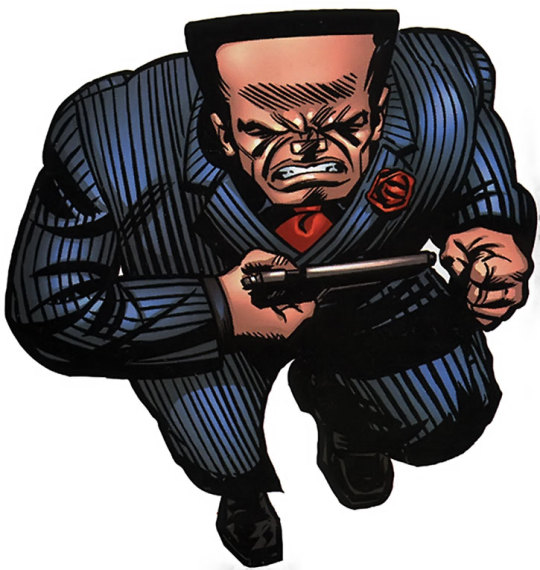
Silvermane
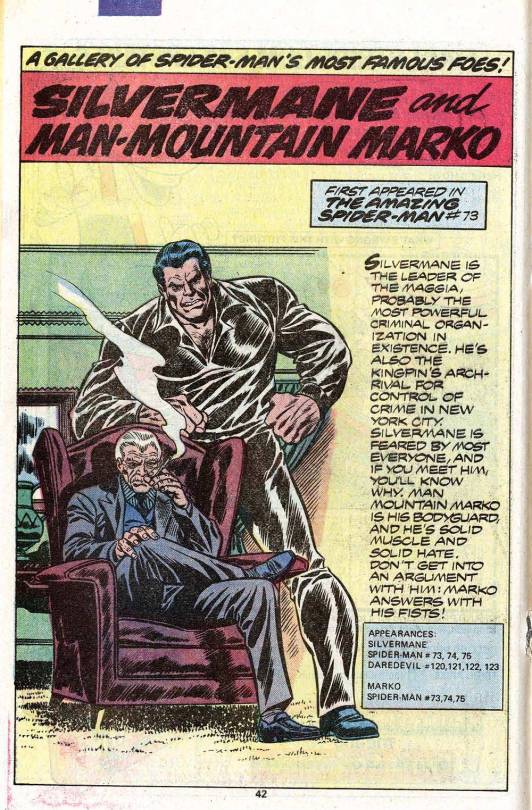
Don Fortunato
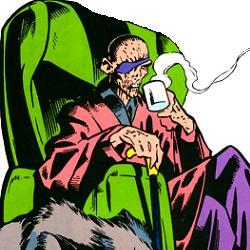
Tombstone
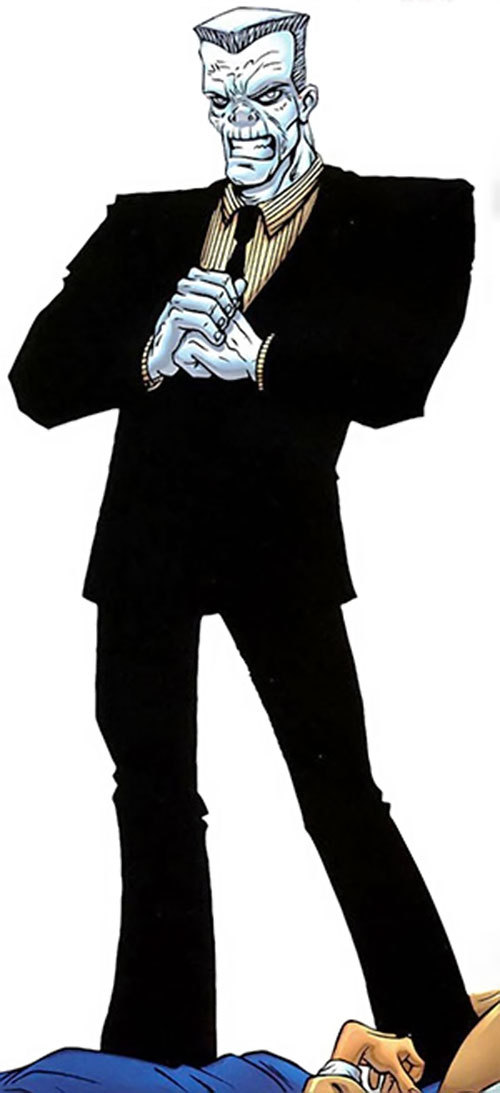
Man Mountain Marko
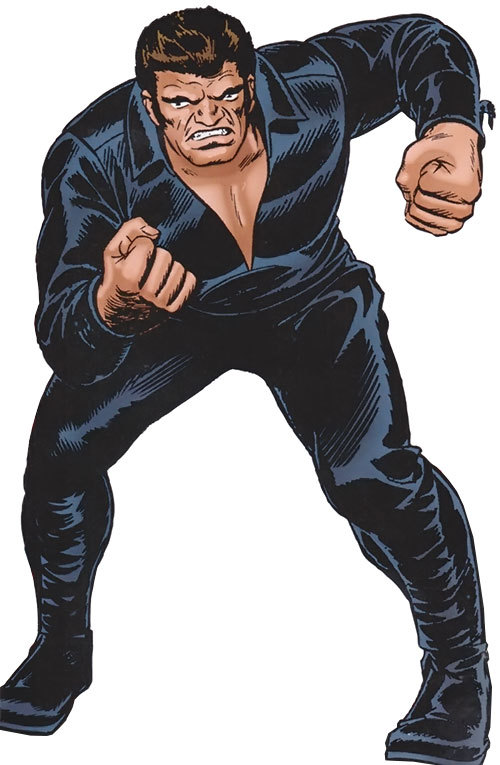
Mister Negative

The Rose

Delilah
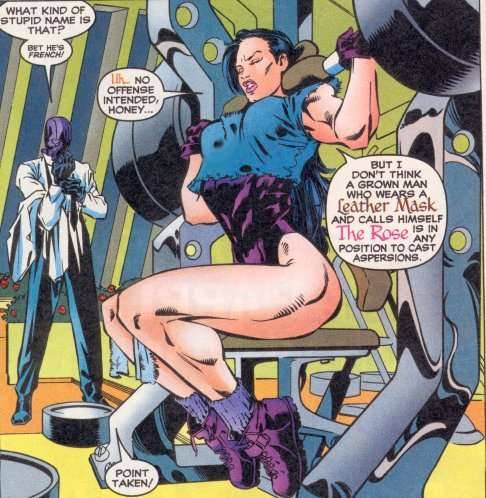
The Crime Master
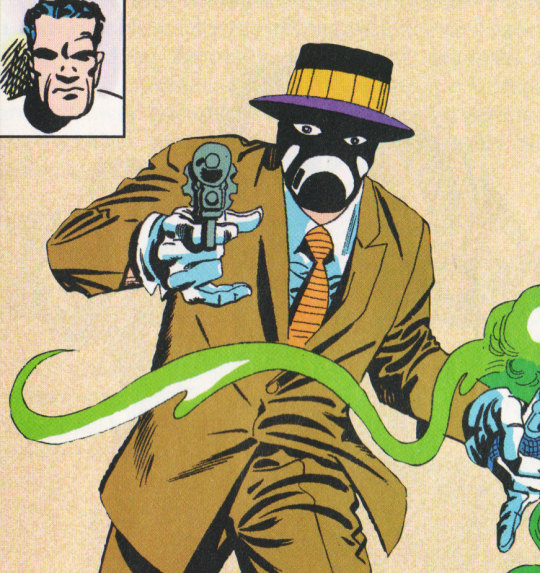
The Big Man

Black Tarantula
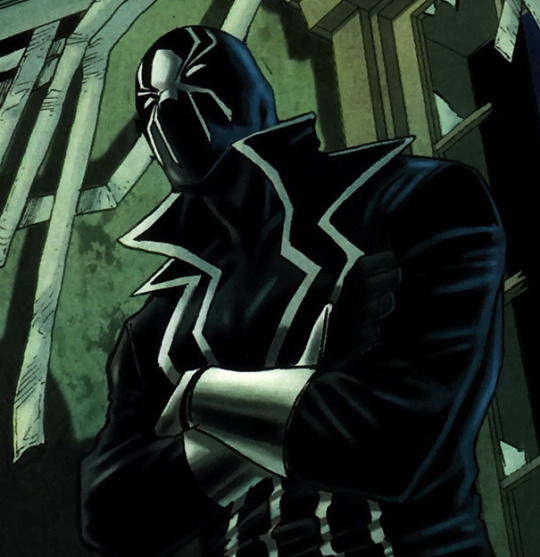
The Enforcers
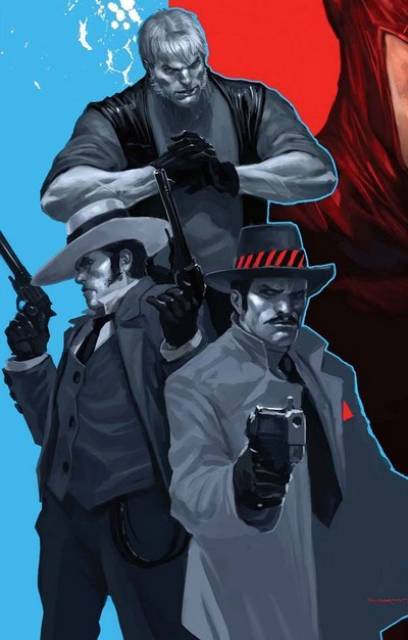
Gangsters one and all.
Gang war storylines have occurred more than once in Spider-Man’s comics and having him caught in the middle of one, trying to end the war for the sake of the civilians would present a realistic, complex and far more difficult to solve challenge for Spider-Man than ever seen before.
Spider-Man could come face to face with the realities of crimes which exist in our own real world and see how it’s not a battle with a true ending but one which he and other people must constantly resist all the same.
Spider-Man and the media
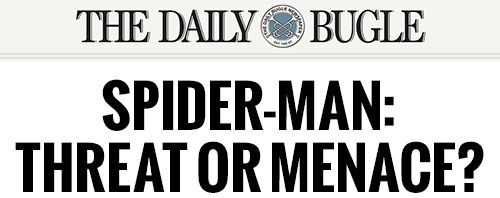
As perfectly cast as J.K. Simmons was as J. Jonah Jameson in the original Sam Raimi Spider-Man film trilogy it must be said the movies downplayed the character compared to the comic books.
Whilst he served the same basic function as Spider-Mans loudmouth skinflint boss who used yellow journalism to slander Spider-Man and make the city mistrust and hate him, he was ultimately a bit player in the proceedings of the trilogy.
In the comic books especially the early days of Spider-Man Jameson was almost the resident villain of the series, a lot of panel time was dedicated to him and his irrational vendetta against our hero. He and Spider-Man often exchanged harsh words and it seemed his persecution of Spidey was unrelenting. He was in fact one of the three most important recurring characters in the whole series during the original Steve Ditko run next to Spidey and Aunt May themselves.
Doing a movie which is actually specifically about Spidey’s relationship with Jameson and making the central focus the ramifications of Jameson’s smear campaign would not only be something original for a Spider-Man film but fairly original for a superhero film in general. Jameson isn’t a super villain nor is he truly evil. He’s just a greedy man with an irrational hatred stemming from deepset issues which themselves make him a compelling character.
The film could thus be about the abuses of power afforded to those who control the media and examine the responsibilities and role the press should hold, with a greater focus being upon the press’ obsession with celebrities and the detrimental effects they can have on their lives.
Once more this isn’t an enemy or a crisis Spider-Man can truly resolve or defeat, so much as learn to live with, which is once again something fairly unique for a superhero movie.
But just so we can have our bam smack pow superhero action we could draw upon one of two classic Spider-Man tales to generate a villain or two.
In Amazing Spider-Man #20 Jameson infamously helps create the Scorpion as a natural adversary to Spider-Man only for his creation to turn on him thus justifying Spider-Man save him. The Scorpion has never been done on film and fits Marvel’s mould of villains who are dark reflections of the hero. In fact that is why Jameson created the Scorpion, he was based upon a fellow (but bigger) arachnid.

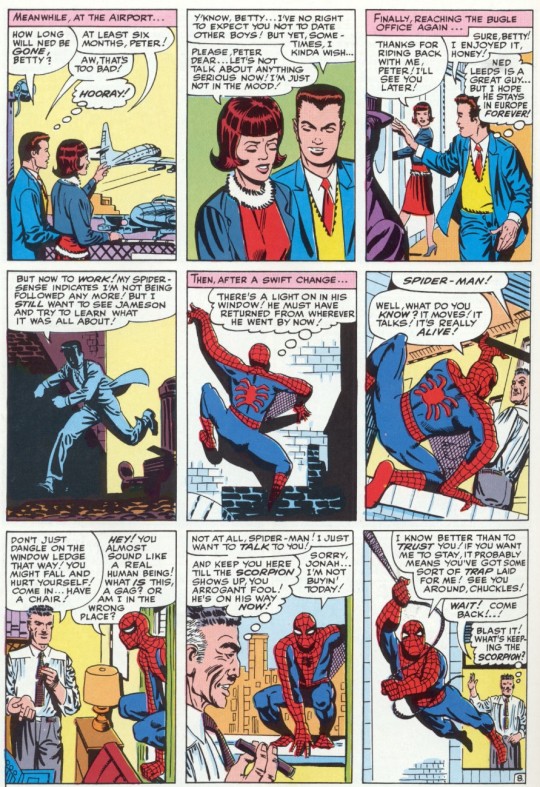
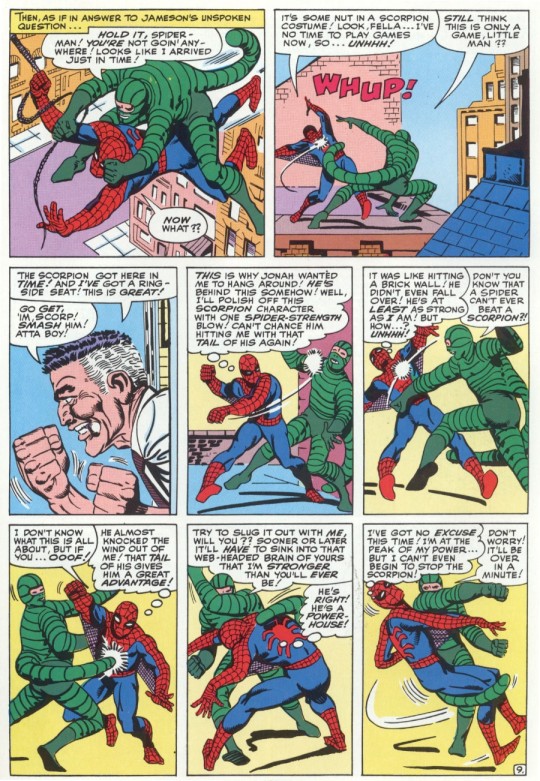

Alternatively we could draw upon a famous recurring element of Spider-Man lore, the Spider Slayers. Throughout his history Spencer Smythe and his son Alistair have created robots specifically designed to locate, capture and sometimes kill Spider-Man, with the designs of the robots offering a variety of interesting visuals. However many of the Spider Slayers were affiliated with Jameson who wanted to use them to rid the world of Spider-Man.
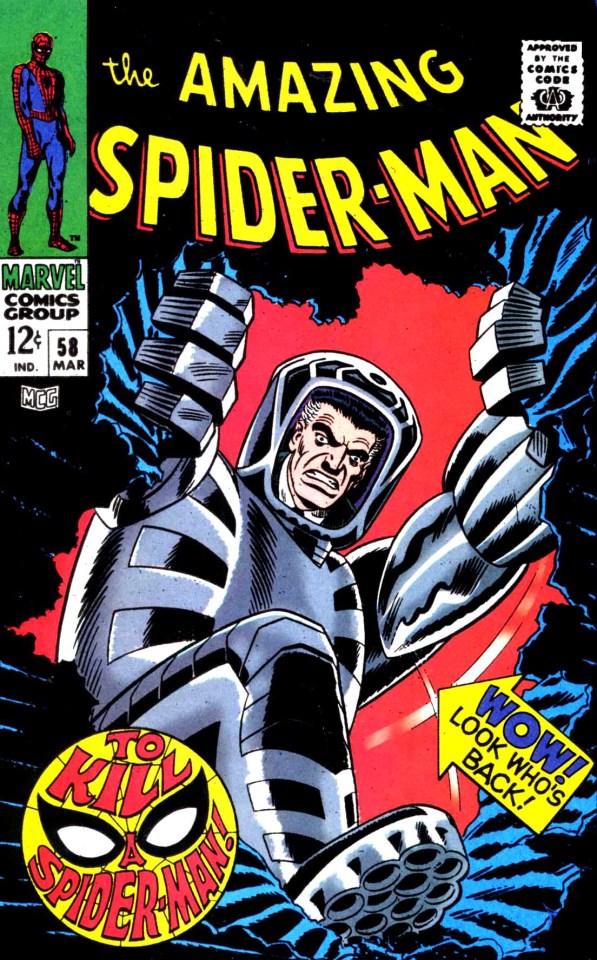
Perhaps one of the most famous Spider Slayer stories was the death of Spencer Smythe which involved Jameson and Spider-Man shackled together by a bomb counting down to their destruction. Adapting this would be a perfect way to bring the movie to it’s climax and focus in on the central relationship between Spider-Man and Jameson.
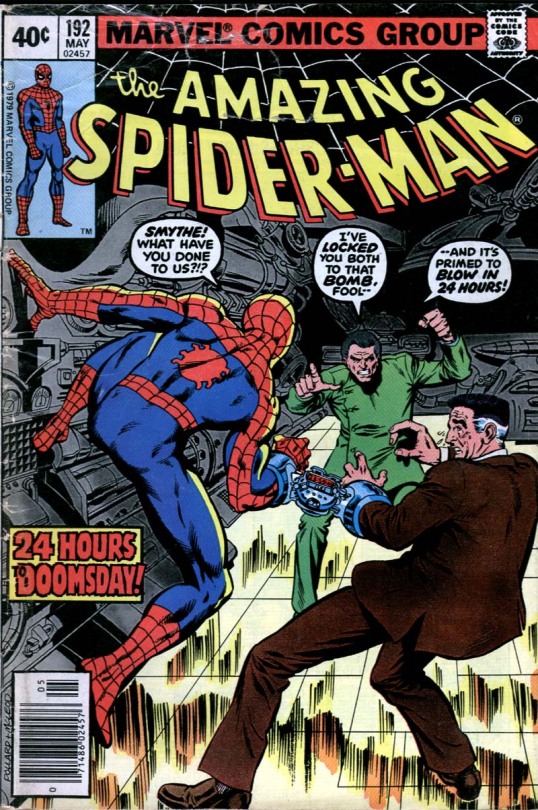
Peter Parker is a Mama’s boy
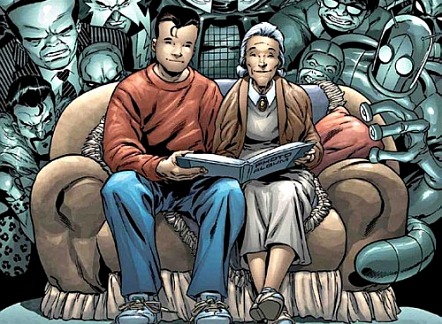
Love her or hate her, Aunt May is vitally important to the mythology of Spider-Man and his character. Hence she’s appeared in every Spider-Man movie to date.
She is also his mother. Not biologically, but in all the ways that really matter she is his mother.
Many stories (sometimes to an exaggerated extent) have showcased Peter’s affection for May and her doting attitude towards him. But like Jameson we’ve only seen this in the movies as part of larger plots where it isn’t really the point. When done right it’s really endearing and something relatable to most people.
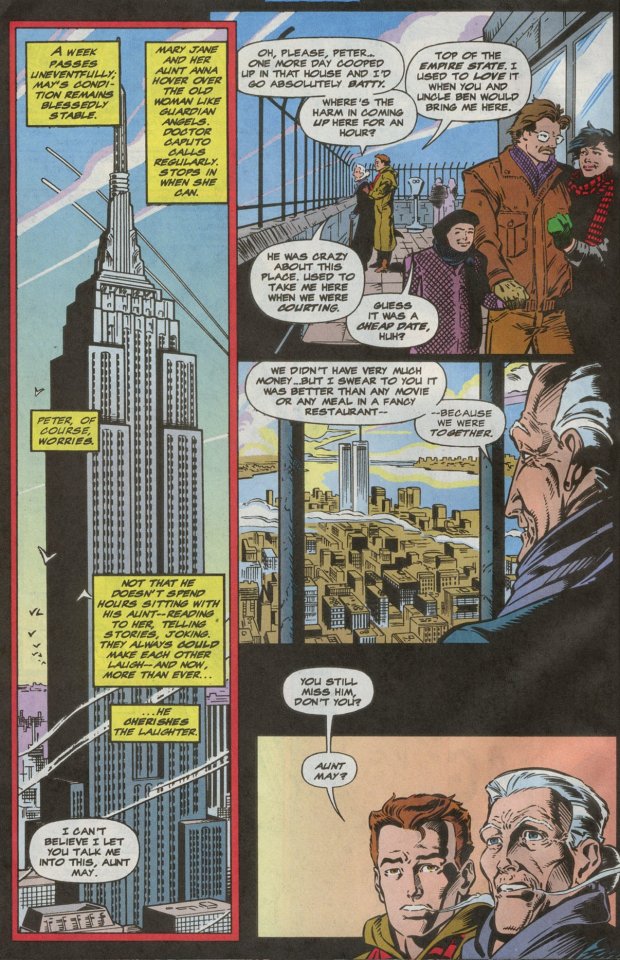

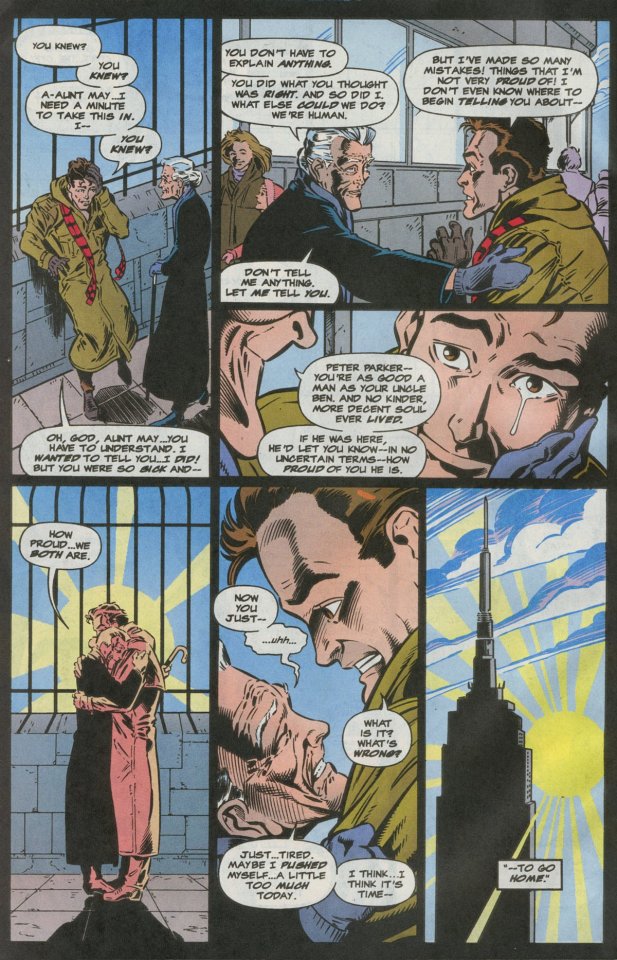


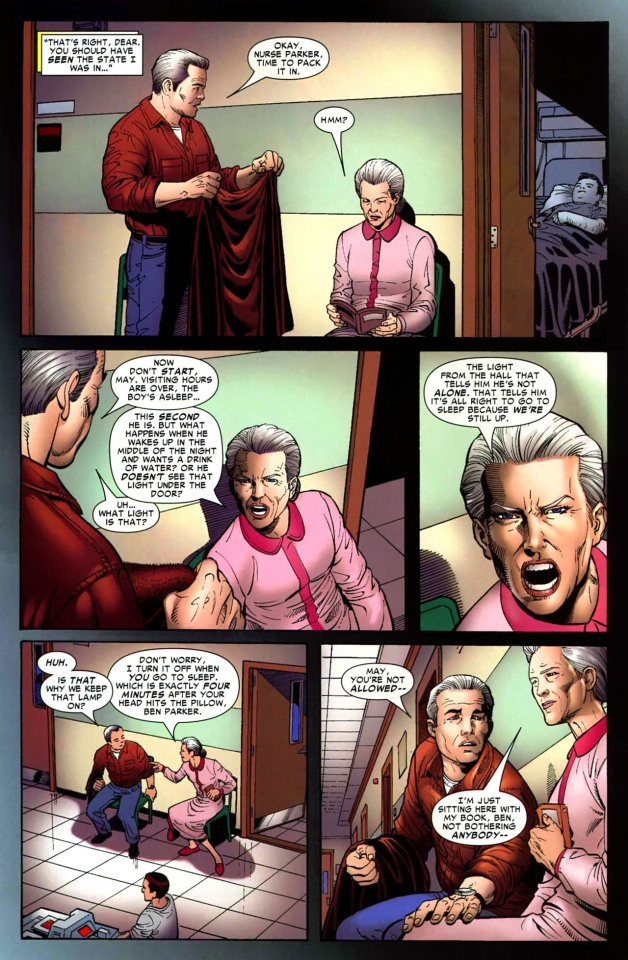
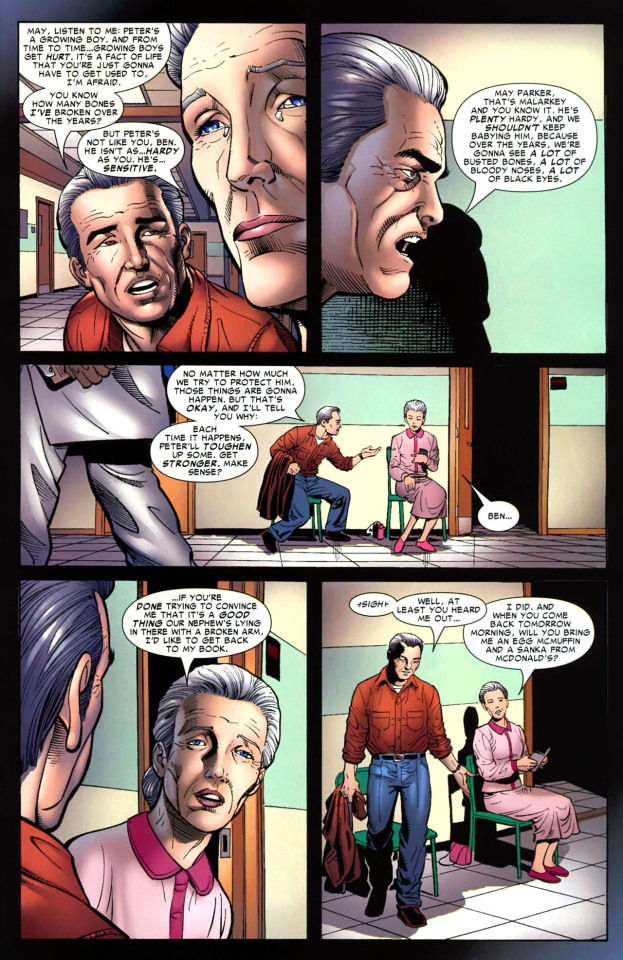

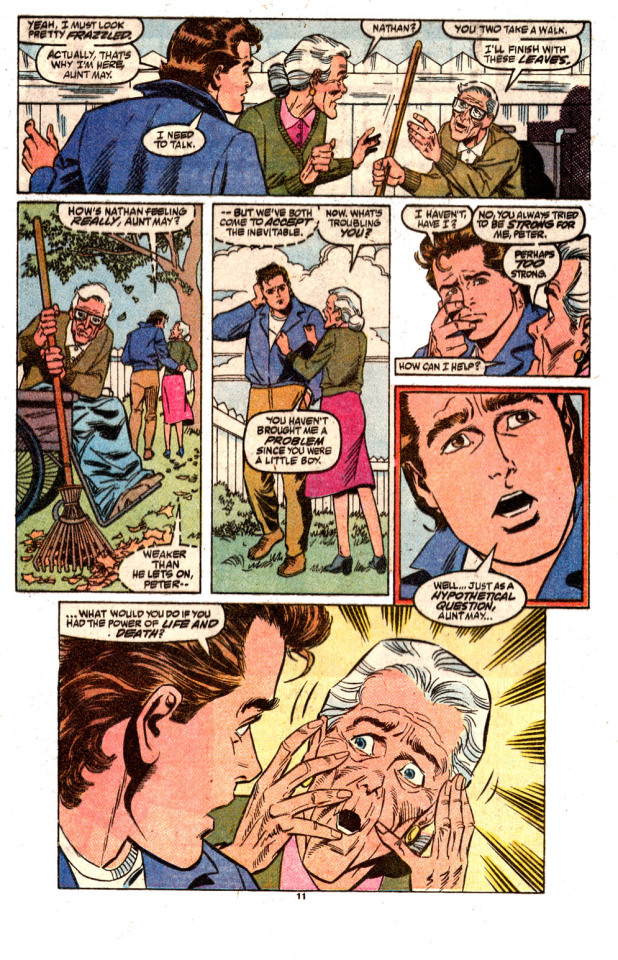
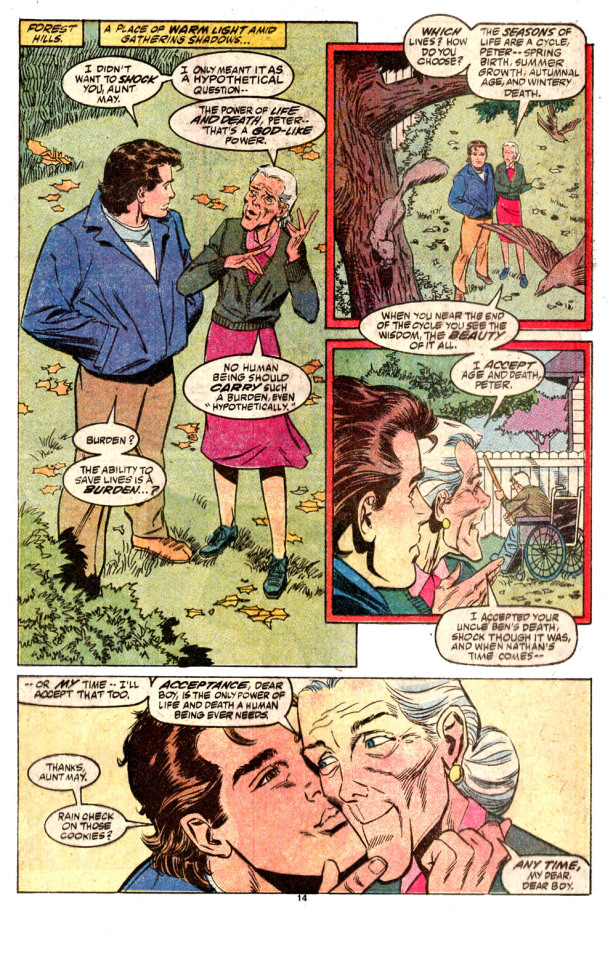
Instead of a Spider-Man movie which is about Peter Parker’s romance with a woman, his rivalry with a new villain, the mystery of his dead parents or (ugh) his teacher/student relationship with someone like Iron Man, why not make the heart and soul of this movie about a parent and child, specifically a mother and her son.
Films like Logan prove that that can work but the unique twist of this movie would be that the focus isn’t upon someone learning to be a parent or a father/son relationship or a mother/daughter relationship or even a father/daughter relationship. Rather it’d be the far less focussed upon mother/son relationship.
Even in movies which do focus upon a relationship like this things typically play out wherein the mother is fridged, or it’s about a woman learning to be a mother, or a woman struggling to survive for the sake of her son or where the relationship is strained (think Tony Soprano and his mother).
Instead this would be a movie about a kid and his mother figure coming to together to cope and survive in a world now bereft of the most important person in both of their lives who supported them both.
And the central basis of this movie could be arguably THE most iconic Spider-Man storyline of all time, the Master Planner trilogy. Allow me to give you some cliffnotes from the story.
A new gang working for a criminal called the Master Planner who plans his schemes meticulously so they go off without a hitch butts heads with Spider-Man. Meanwhile Aunt May is feeling incredibly unwell as Peter Parker goes to his very first day of college. Later she collapses and we learn that she’s dying, poisoned by a blood transfusion Peter gave to her many issues ago. A potential cure can be created from the expensive ISO-36 chemical.
Peter pawns most of his and May’s possessions to buy the chemical but the Master Planner steals it believing it could be of use in his experiments. Spider-Man uses a Daily Bugle journalist to help him get a lead on the whereabouts of the Master Planner and he proceeds to bust up the criminal underworld, desperately seeking information of the MP.
Finally he learns that the MP is in a secret underwater base so Spider-Man has to swim beneath the Hudson river, infiltrate the base, fight off the hordes of armed henchmen and finally confront the Master Planner himself, who is in fact DOCTOR OCOTPUS.
As they fight Spider-Man is trapped under several tons of heavy metal rubble, with water quickly filling the room and the ISO-36 just out of reach. Then in an endlessly homage and utterly iconic scene Spider-Man ruminates upon how he cannot allow himself to fail Aunt May like he did Uncle Ben and gradually summons all of his strength and in a supreme act of willpower throws off all of the rubble in the greatest Spider-Man splash page of all time.
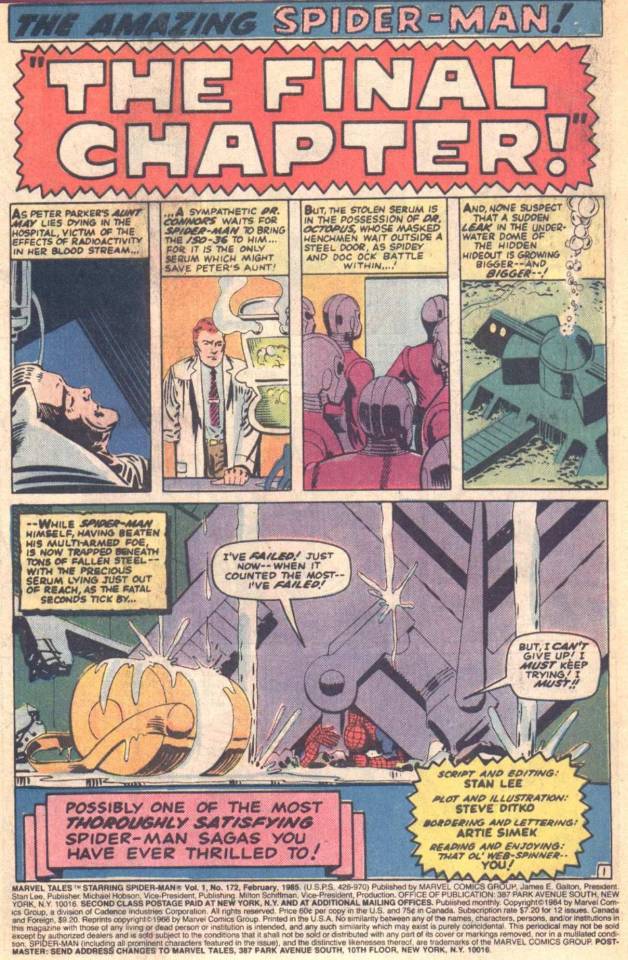
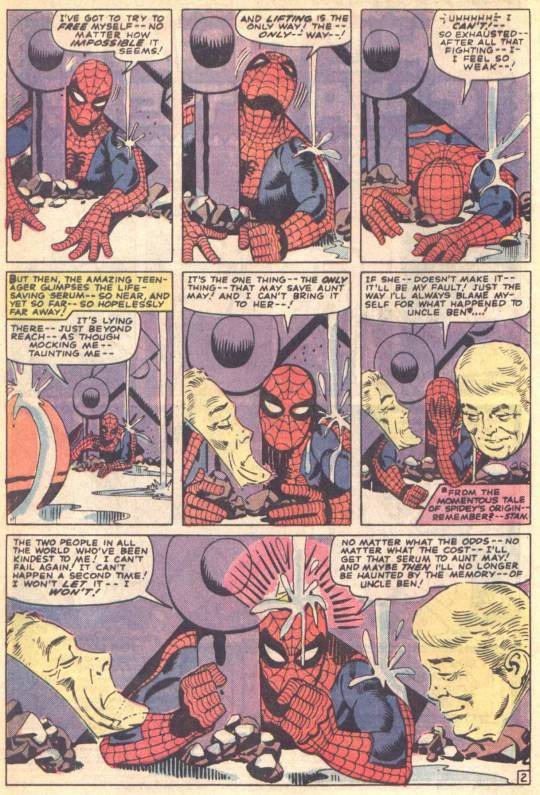
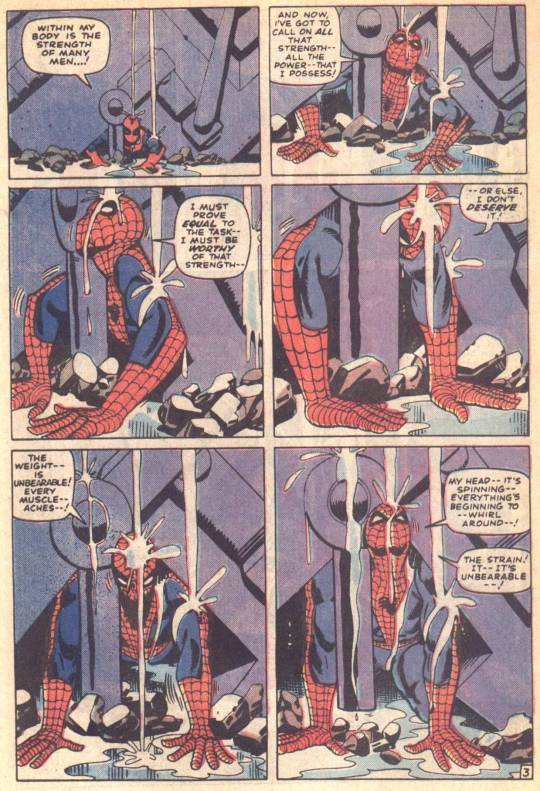


He then gets the ISO-36 swims back to the surface, fights some of Doc Ock’s goons underwater, then despite his exhaustion single handily kicks the rest of their asses before getting the chemical to the doctors just in time to save Aunt May.
Now sure that isn’t everything that happened and you’d have to tweak a few things to make it work as a self-contained movie about a high schooler...but...goddam...how does all that NOT sound like the most baller Spider-Man movie ever!?
There’s action, there’s tension, irony, human drama, heroism; it’s got everything!
Now you see those three idea I just tossed out?
Well with one exception all of them are based upon the original Steve Ditko run of Spider-Man. In fact not even all of the Ditko run, just the first 33 issues.
None of them involve retelling Peter Parker’s origin.
None of them involve repeating material or storylines we’ve seen in other movies before apart from Spider-Man fighting Doctor Octopus which is in my suggestion not even the point of the movie.
I just made all of those suggestions up off the top of my head based upon less than the first five years of Peter Parker’s existence.
I could probably make up even more if I cast my net further and spend a bit more time considering it.
So tell me again how there are no new ideas for a Peter Parker Spider-Man movie?
Tell me how the only way to make the franchise fresh again is to use another character other than Peter Parker?
Go on. I dare ya?
#Peter Parker#Miles Morales#Spider-Man#Ultimate Spider-Man#mcu#marvel cinematic universe#Spider-Man: Homecoming#Marvel#marvel comics#Aunt May#May Parker#J. Jonah Jameson#Scorpion#Mac Gargan#Spencer Smythe#alistair smythe#Kingpin#Hammerhead#Tombstone
31 notes
·
View notes
Text
Dramaturgy Rinse:Mike Raffone @ Artworks Elephant
IT’S A KITSCH GIVEAWAY AT SOUTH EAST LONDON’S NEWEST CABARET NIGHT
Lovers of Kitsch are sure to enjoy award nominated comedy performer Mike Raffone’s monthly Cabaret show Cabaret Rinse. Apart from featuring top acts from the world of comedy and variety, Cabaret Rinse also boasts a unique raffle.
Before the show the audience are each given a free strip of raffle tickets. Throughout the show they must compete with each other in a series of bizzare games to randomly generate the winning ticket number. And if that’s not exciting enough the lucky winner then gets to choose her/his prize from The Cabinet of Kitsch, a mock conveyor belt of kitsch goodies that makes The Generation Game’s prizes look positively up market.
What was the inspiration for this performance?
With Cabaret Rinse I wanted to do something that could be a bit more anarchic than I usually do, I was always a big fan of the apparent anarchy of Tiswas when I was a kid.
I was originally thinking of a sort of game show type thing, but that's been done quite a bit recently, but I knew (like everything I do) it had to have a heavy interactive element with the audience. I remembered that I ran a raffle in a comedy night that I used to run about 5 years ago. It proved to be the most popular thing in the show, and the only thing that actually made money. So I had the idea of having a load of stupid games and routines that would generate the winning numbers of the raffle, sort of a bit like the big song and dance they used to make picking the numbers for the national lottery. Only my version would not be as slick and bland, and would have the lotteries and gaming commission break out in a cold sweat. Also the prizes are kitsch tat, but people seem to love that as well.
That's how the idea of Cabaret Rinse was born. It was originally a show that I would mainly feature in, with a few special guests, but after starting to do it once a month it became clear to me that the other acts on the bill should take centre stage. It's a tall order to come up with an entire show once a month! So it morphed from a interactive show idea into a comedy night with a bill of artists and the raffle idea just holding the whole evening together .Actually, if I'm honest I'd say that the idea came to me in a flash of inspiration whilst walking down the street in Adelaide, South Australia when I was there for the The Adelaide Fringe, but I think these were the ideas that were brewing in my head.
Is performance still a good space for the public discussion of ideas?
I'm not sure that the performance has ever been a good space for the discussion of ideas, we performers set the agenda so any debate has to be a bit one sided.
I do think that it's always been a great platform for the dissemination and advancement of ideas. You could say that ideas are discussed as you can look at things from a variety of standpoints. It always says something and has value and meaning, I'm not sure there is any debate thought.
How did you become interested in making performance?
A variety of reasons really. I did always love the fact that theatre said things about all sorts of things, art, politics, science, religion, the human condition. I found that exciting as a young person which sometimes makes me wonder why I ended up in comedy and entertainment.
But then good comedy says a lot as well. I also have a shallow though, and have always reveled in the theatrical nature of theatre, the shear affront and arrogance of showing off. And of course I fell in love with actresses and show girls when I was young. I just decided that it was a world that I wanted to be part of wit all of it's amazing facets.
Is there any particular approach to the making of the show?
Although my shows are heavily interactive and are not really overtly text based I do like to actually write the shows before I perform them these days, and I also work with a director a bit to refine the ideas once they are up and running. Of course it all changes when I perform it, but I like the confidence of knowing that for any show, but biggest problem is too much stuff. I find ideas easy, but I have to work at giving them coherence, and sticking to the point. That's the challenge for me. I also like to give myself creative limitations.
For example for my one man comedy sketch show Brain Rinse the limitation was that every idea had to involve audience interaction and participation, whether onstage as individuals, or joining in en mass. I allowed myself to do anything, as long as I stuck to that one rule. I'm a great believer that it's impossible to fill the blank canvas without these sort of self imposed rules or creative limitations.
With Cabaret Rinse, it was the idea that all the interactive ideas had to generate a number between one and ten in some way, again after that the sky's the limit. Of course what makes Cabaret Rinse different is I have to refine the whole evening, the sort of acts I book, what the running order should be, how many and how long the intervals should be etc etc. Not just the bits that I do.
Does the show fit with your usual productions?
Yes, and no. Yes for all the reasons that I've explained, and no because for once I'm not the star of the show. I tend to so one man shows, write them, promote them, star in them, even do my own sound cues from onstage. I'm a bit of a control freak. I'm an performing empire builder, a bit like Chairman Mao, except my empire is very small, and I'm not so mean. I also don't have a little book... of any colour, but that's beside the point. It's interesting for me though, to take a back seat and let the other acts on the bill drive the show.
I actually enjoy having these great acts share the stage with me. I have genuine love, passion and respect for the acts that I book. Again it's creative limitations, this time applies to my programming of the evening. They have to be acts that I love, and then I hope that I communicate that love to the audience when I compere the evening.
What do you hope that the audience will experience?
Well I suppose the obvious answer to that is that I hope that they experience laughter, but also a togetherness. I want my comedy night to feel like it's just hanging out with friends. In fact some to the club stalwarts are friends of mine and I have no problem in calling them by there first name and being familiar with them.
I want them to feel like they are being entertained in their front room I guess... that familiar. I also love it when people tell me that they don't usually like audience participation but they loved my show.
I try not to put people down, but encourage them to go further with joining in than they ever thought they would. Then they are rewarded as being the heroes that they are, and it becomes their show. As for the acts I book, I've always seen Cabaret Rinse as being primarily a comedy night for acts, like me, who are misfits, who don't fit easily into any genre, or circuit of work. Many of the acts are unknown, or have been given licence if they are experienced for trying something new, or experimental so I guess I also want the audience to feel the excitement of this edge, of not quite ever knowing what they will get, but trusting that it will be good.
A Star Trek toby jug, a Chesney Hawkes picture disk, a home burlesque kit and a nodding Buddha, are just some of the prizes that audiences have eagerly snapped up over the past few months. But it’s not all about tacky consumerism, there has been a lot of fun along the way too. Audiences have re created a Busby Berkely water dance, taken part in a human version of space invaders and played a classic party game with a role of gaffa tape, some sweets and a man dressed in a piñata costume.
Mike explains further, “We get some great acts at Cabaret Rinse, and they are all different and very original in their own way. I felt that just bringing them on in the normal way just wouldn’t do them justice. I wanted a fun, madcap, off the wall way to compere the evening and the eureka moment came when I was on tour in Australia. That’s when I hit on the idea of an interactive raffle and it’s proved a real hit with our audiences. Last month’s raffle winner was so chuffed about winning the 1972 Ed Stewpot Stewart Pop Pary LP, on vinyl with a double gatefold sleeve that she tweeted about it after the show. I think she wasn’t even alive when the record was first released.”
ny c) America
Cabaret Rinse is on at The Artworks Elephant, Elephant Road, Elephant and Castle on every second Friday of the month. Next show is Friday 9th February. This month’s acts include Malcolm Hardee award winning character comic Candy Gigi and Jon Hicks, star of the hit variety show Slightly Fat Features. Show starts at 7:30pm and the Cabaret Rinse pop up bar is open from 7pm. Tickets are £9/£6 concs and there is a £2 discount if you book online via www.cabaretrinse.co.uk.
from the vileblog http://ift.tt/2BCQNV7
0 notes